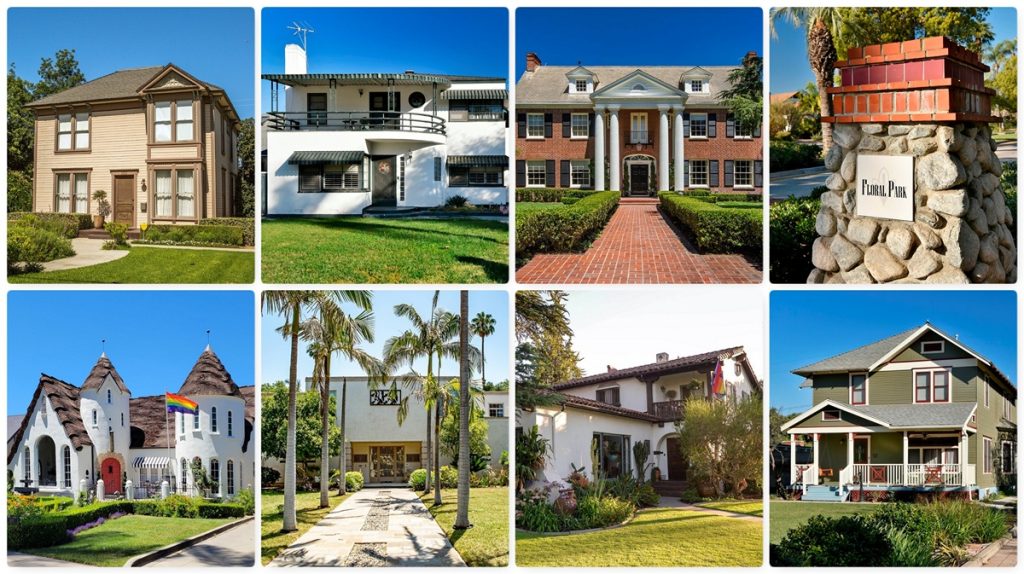Floral Park
The draft of the National Register of Historic Places Registration Form for the Floral Park Historic District in Santa Ana indicates there are 576 contributing properties. For our milestone Landmark #400, we have chosen to feature the two area parks and 28 residences that are designated as Landmarks on the Santa Ana Register of Historic Properties in Floral Park. The streetscapes of Floral Park grew from an occasional large farm house among the orange, avocado and walnut groves to sections of single-family homes in a variety of romantic styles. The featured residences were built between 1894 and 1960 with the majority falling in the 1920s and 30s, reflecting that transition, growth and development. We appreciate the cooperation of the Floral Park Neighborhood Association in adding the district to our project.
Santa Ana was incorporated as a City of Los Angeles County on June 1, 1886. It became the county seat when the bill establishing Orange County passed on March 11, 1889. By 1900, the city was expanding quickly in every direction from the civic and commercial core centered at Main and Fourth. Floral Park developed on the northernmost reaches of the city. Agricultural uses predominated in the outlying areas, with cultivated fields and orchards dotted with widely scattered farmhouses. Among the several tracts that would make up Floral Park Historic District, the original tract to first carry that name was the property of the Greenwald brothers, Herbert and Oscar. Floral Park Historic District took this name in the 1990s as part of a city wide rebranding effort and the Floral Park Neighborhood Association formation.
Allison Honer, in 1923, was the first to break ground in developing the area of Santa Ana that would become Floral Park. Almost 86% of the residences built since then contribute to the high level of integrity of the historic district. Construction and development of the area continued unceasingly until World War II when the nation shifted to wartime production and lumber was valuable war materiel. With the concentration of local officials, prominent business people and financiers in the neighborhood, Floral Park became part and parcel of the city’s overall growth. In the 1980s, the City of Santa Ana began a rebranding campaign and many of the individual neighborhoods formed supportive organizations. Floral Park Neighborhood Association was borne from a split with the North Santa Ana Association in May, 1992.
Santa Ana, Orange County
Photographers: John Bare, Lori Norman, Al Russell and Andrew Schmidt

